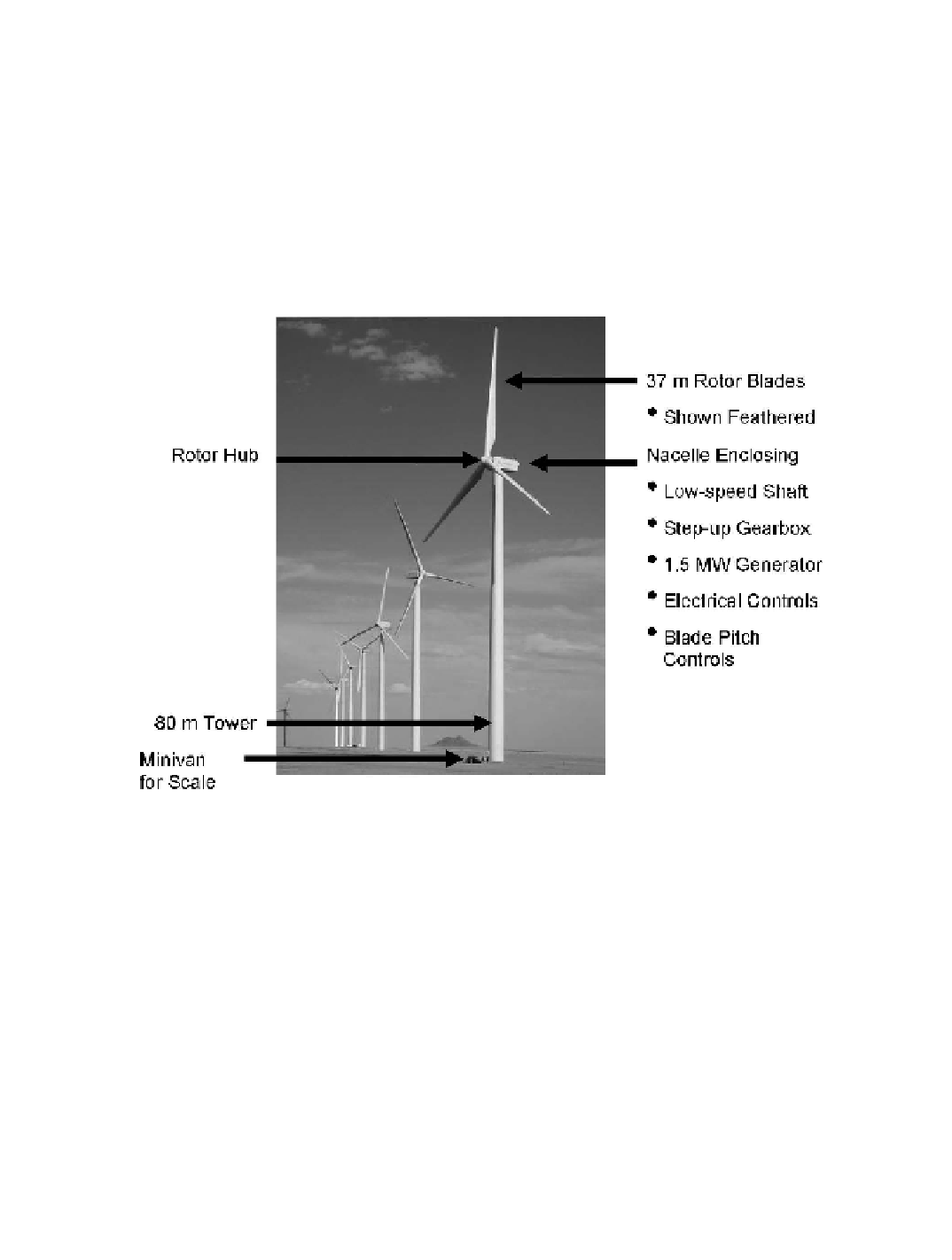Environmental Engineering Reference
In-Depth Information
Today's Modern Commercial Wind Turbines
General Coniguration
The typical modern wind turbine deployed throughout the world today is shown in Fig-
ure 3-40. It is a horizontal-axis machine with a three-bladed rotor about 70 m to 80 m in
diameter mounted upwind on a 60- to 80-m tower. Its power rating is about 1.5 MW, and it is
installed in groups with a combined peak power output of 50 MW or more. A typical layout
of the power train components in the nacelle is illustrated in Figure 3-41. Newer and larger
turbine designs of 2 MW to 3 MW are beginning to be deployed in large quantities. These
larger machines have rotor diameters of 90 m to 100 m and often have hub heights at 80- to
100-m elevations.
Figure 3-40. General view of a typical modern wind turbine installed in a wind power
plant.
[Photographed by M. Rumsey, Sandia National Laboratories]
The power output of today's wind turbines is regulated by
blade pitch control
, in which
the blades are rotated about their long axis to adjust their aerodynamic
angle of attack
with
respect to the relative wind. The rotor is pointed into the wind by rotating the nacelle about
the tower axis, which is referred to as
yaw control
. Wind direction sensors on the nacelle
tell the yaw controller where to point the rotor. Torque and speed sensors on the generator
and drivetrain enable the blade-pitch controller to regulate the power output and rotor speed
to prevent overloading structural components. Modern turbines generally start operating in
winds at hub height of about 4 m/s (9 mph) and reach their rated (usually maximum) power
output at about 13 m/s (29 mph). At about 25 m/s (55 mph) the control system will shut down
the turbine by
feathering the blades
(pitching them to stop rotation).

Search WWH ::

Custom Search